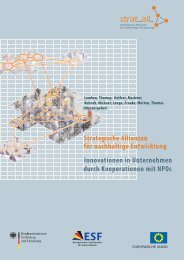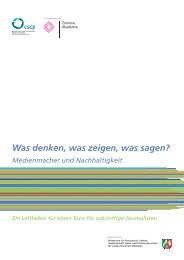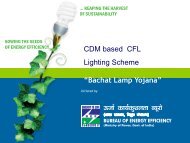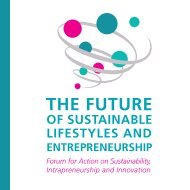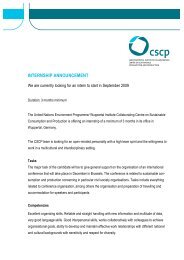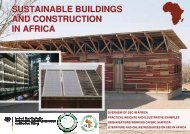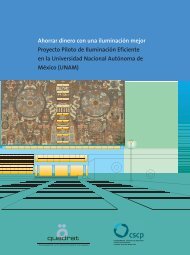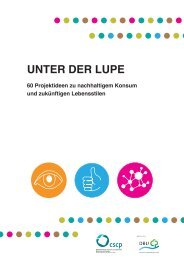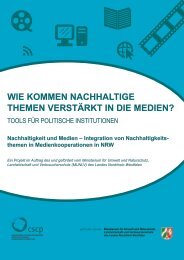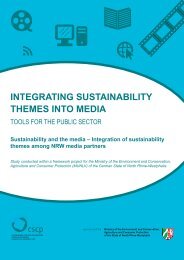today's facts & tomorrow's trends - SPREAD Sustainable Lifestyles ...
today's facts & tomorrow's trends - SPREAD Sustainable Lifestyles ...
today's facts & tomorrow's trends - SPREAD Sustainable Lifestyles ...
You also want an ePaper? Increase the reach of your titles
YUMPU automatically turns print PDFs into web optimized ePapers that Google loves.
One of the most difficult elements to change is the norms and values or conventions<br />
and traditions at the system level. These dictate what behaviour is<br />
considered normal. Presently, many unsustainable lifestyles are the norm and<br />
changing these norms poses a major challenge that requires careful scrutiny of<br />
existing routines and underlying values related to comfort, material consumption,<br />
and status assumptions. There is a need to “un-learn” old behaviours,<br />
challenge assumptions and adopt and encourage new norms until they become<br />
usual, common and habitual (Lewin 1951).<br />
Challenging existing social norms – Some examples<br />
In 2009, the prime minister of Bangladesh ordered male government<br />
employees to stop wearing suits, jackets, and ties to work, so that the air<br />
conditioning systems could be turned down (Dummet 2009). The aim was<br />
to expand the “Suit Ban” to the business sector and, eventually, to re-write<br />
Bangladesh’s official dress code.<br />
The Japanese “Cool Biz” campaign also discouraged suits and ties and with the<br />
aim of keeping thermostats at 28°C. The Japanese Prime Minister instructed<br />
his cabinet to wear traditional Japanese short-sleeved shirts instead of<br />
business suits (Spiegel 2007). Similar ideas have also been taken up in the UK<br />
and by UN chief Ban Ki-moon who encouraged UN staff in New York to dress<br />
appropriately for summer months (Kanter 2008).<br />
Overcoming lock-ins at the system level<br />
The norms, values and lifestyles in society today are in many ways “locked in”<br />
or embedded within existing institutional and infrastructural settings (Sanne<br />
2001). The configuration of our cities, infrastructure, supply systems, housing<br />
designs and products in many ways limits the scope for individual choice<br />
(Wilhite et al. 2000; Shove 2003; Southerton, Chappels et al. 2004). Therefore,<br />
even when there is a willingness among people for change, they often fail to succeed<br />
in lifestyle changes because they are confronted with factors that “lock-in”<br />
their unsustainable behaviour and choices (Mont and Power 2010; Van Vliet et<br />
al. 2005).<br />
An example of “lock-in” for housing and mobility<br />
Urban planning shapes behaviour for many years. In turn, people’s preferences<br />
affect settlement structures, with many people having a preference for<br />
single family homes. This preference contributes to urban sprawl and<br />
the development of highly dispersed communities. A disperse pattern of<br />
settlements results in longer journeys between home, work, shopping areas<br />
and other facilities, usually by means of the private automobile -- sometimes<br />
several cars per family.<br />
The dominant car culture motivates retailers to locate shops at city outskirts,<br />
which restricts access for people who lack a car. The consequences of this<br />
shift include deteriorating city centres, increased car dependency which in<br />
turn further entrenches, or “locks in”, unsustainable behaviour (Mont and<br />
Power 2009).<br />
A framework for change 97



